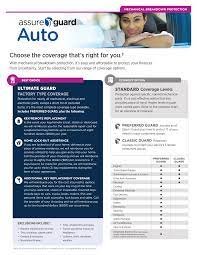

Prepare for Your Future.
Today.
A Traditional IRA helps you to save on your own for retirement with tax-deferred earnings and a possible tax deduction.
Traditional IRA Benefits

By using a Traditional IRA to save for your future, you may be able to save money today if:
- you are eligible to deduct Traditional IRA contributions on your federal income tax return or
- you qualify for a tax credit of up to $1,000.
But first you must be eligible to contribute to a Traditional IRA.
- You (or your spouse if filling a joint tax return) must earn compensation from employment.
- Starting with the 2020 tax year, you may make a contribution at any age.
How much can I contribute?
If you are eligible, you can contribute 100 percent of your annual compensation up to $7,000 for 2025 (plus $1,000 if, within the tax year, you will be age 50 or older). The contribution limit is subject to annual cost-of-living adjustments (COLAs).
What is the annual deadline to contribute?
You can contribute to your IRA until the due date for filing your federal income tax return for the year (generally April 15).
Can I deduct my Traditional IRA contributions?
Unless you (or your spouse) actively participate in an employer-sponsored retirement plan, you can deduce your Traditional IRA contributions. If you (or your spouse) are an active plan participant, you still may be able to deduct all or part of your contributions, depending on your modified adjusted gross income (MAGI).
MAGI Limits* for Active Participation
| IRA Owner | Year | Full Deduction | Partial Deduction | No Deduction |
|---|---|---|---|---|
| Single, Active Participant |
2023
2024
|
$73,000 or less
$77,000 or less
|
$73,001-$82,999
$77,001-$86,999
|
$83,000 or more
$87,000 or more
|
| Married, Active Participant, Filing Joint Tax Return |
2023
2024
|
$116,000 or less
$123,000 or less
|
$116,001-$135,999
$123,001-$142,999
|
$136,000 or more
$143,000 or more
|
| Nonactive Participant Married to Active Participant, Filing Joint Tax Return |
2023
2024
|
$218,000 or less
$230,000 or less
|
$218,001-$227,999
$230,001-$239,999
|
$228,000 or more
$240,000 or more
|
Can I contribute to both a traditional IRA and a Roth IRA?
Yes. But the contribution amounts that you can make to both types of IRAs for the same year cannot total more than your annual contribution limit.
Can I contribute to a Traditional IRA if I participate in another retirement plan?
Yes. Your participation in a retirement plan will not affect your eligibility to contribute to a Traditional IRA nor will making Traditional IRA contributions affect what you can contribute to your retirement plan.
Can I roll over other retirement plan assets to my Traditional IRA, or roll over my Traditional IRA to another retirement plan?
Eligible assets from most retirement plans, such as your 401(k) plan, can be rolled over to your Traditional IRA. Check with your plan administrator. And, if the plan allows for it, you may roll over the pretax portion of your Traditional IRA to most employer-sponsored retirement plans.
When can I withdraw money from my Traditional IRA?
While you'll get the most out of a Traditional IRA at retirement-or in carrying out your estate planning-you can withdraw the money from your Roth IRA anytime.
What is the IRS penalty tax?
A 10 percent early distribution penalty tax will apply to the taxable amount of your Traditional IRA distribution, unless you qualify for a penalty tax exception (age 59.5 or older, death, disability, first-time homebuyer expenses, qualified higher education expenses, certain unreimbursed medical expenses, birth of a child or adoption expenses, substantially equal periodic payments, health insurance premiums during unemployment, IRS levy, qualified reservist distributions, and qualified disaster-related distributions).
What happens to my Traditional IRA after I die?
You may designate beneficiaries to receive your Traditional IRA assets after your death. Any tax-deferred money in your Roth IRA at the time of your death will be taxable to your beneficiaries upon distribution, unless five years have passed since the first year you contributed to a Roth IRA, in which case, all beneficiary distributions will be tax-free.
*Subject to COLAs



